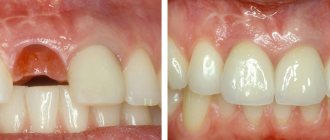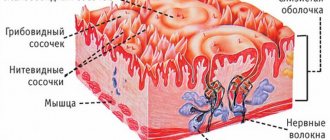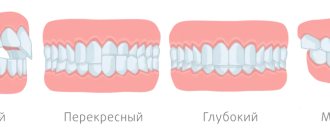Methods for purifying water from fluoride
If there is a lack of fluorides in any area, fluoridation is used - saturating the liquid with substances containing F (-), adding them to toothpaste and food products. This helps the local population fight tooth decay.
A large number of bodies of water, including underground springs that are used for water extraction, contain water with a high fluoride content. Its concentration can be many times higher than the permissible value, which poses not only harm, but also a mortal threat to the body. Depending on the presence of fluorides, different purification methods are chosen.
Methods for removing fluoride from water:
- Physical. Reverse osmosis is used for water purified from fluoride. An effective technology for purifying fluoride from water is based on passing water through a semi-permeable selective membrane.
- Chemical. Chemical cleaning uses reagents such as magnesium or aluminum oxides. These substances react with F(-) and bind them. Impurities are removed from the aqueous solution and retained by filters. The method is simple, inexpensive, and used on an industrial scale. But it is not always possible to completely remove fluoride from water with oxides; the chemical method does not provide a 100% guarantee.
- Electrolytic. Electrodes made of aluminum are immersed in settling tanks. Due to anodic dissolution, aluminum dioxide is formed in the solution, which precipitates F(-). This is how water is purified from fluoride. In addition to fluorides, metals (iron, copper) and other harmful impurities - all large particles - settle on the electrodes. The method is used for preliminary cleaning, thereby extending the service life of fine filtration elements.
Each of the listed methods underlies complex water treatment, which uses a system that includes water filters to remove fluorine, salts, iron, and other dangerous impurities. Complex equipment guarantees high-quality cleaning.
What is fluorine
Scientists' interest in fluoride peaked by the 1930s. This trace element has a biologically active effect in the body of people and animals. It is known as a strengthening element for teeth and skeleton.
Small doses of fluoride help reduce the occurrence of caries in baby and molar teeth. Therefore, a decision was made to artificially fluoridate the water. But what was the threat?
In Russia, water fluoridation began in 1957. This was justified by the fight against caries. However, excessive amounts of fluoride have led to people having health problems.
How to remove fluoride from water
It is difficult to choose filters for fluoride in water on your own, which, together with other filtration lines, will give an impeccably clean liquid at the output. Need professional help. Diasel Engineering specialists will assemble equipment based on laboratory water quality indicators and select filters that can completely remove all harmful impurities.
When the fluorine content in water is high, reverse osmosis units operate effectively.
Causes
The main cause of fluorosis is the systematic increased intake of fluoride compounds into the human body. As is known, the optimal amount of fluoride in drinking water is 1 mg/l. If its content is higher, fluorosis inevitably develops over time, which first affects the teeth and then the patient’s bones. Children most often get sick, especially those whose age does not exceed 4 years. Under the influence of large amounts of fluoride, tooth enamel is formed incorrectly, which leads to the formation of pigmented spots on its surface.
Reverse osmosis plants for purifying fluoride from water
Reverse osmosis plants differ from other types of water treatment equipment in their high productivity and the deepest degree of water purification from fluorine, heavy metal salts, and organic impurities. They are capable of working around the clock, continuously purifying intense water flows in large volumes.
It is beneficial to use the reverse osmosis method to purify water from fluoride. It retains F(-) ions and other impurities, allowing only water molecules to pass through the pores. This ensures output purity of up to 98%. You can set several degrees of purification and separate water flows: for drinking, for household needs.
Osmosis for all industries
To purify large volumes of water, we will assemble a powerful industrial reverse osmosis installation with a line of membrane filters to remove fluoride from water, which operate effectively when the fluoride concentration is exceeded. We will place the necessary elements on a stainless steel frame. We will install shut-off and control equipment, local water supply systems.
We can offer companies equipment of various capacities:
- up to 250 l/hour - for small production,
- up to 500 l/hour - for medium-sized enterprises,
- up to 2000 l/hour - for water supply of especially large industries.
Industrial reverse osmosis units are suitable for any production area that requires clean technical and process fluid. They will allow you to obtain high-quality purification (less than 1 µS/cm), which is very important for microelectronics, for obtaining clean water for laboratories or for preparing injection solutions.
Osmosis for home, for use in households
A membrane filter for water purification from fluoride based on reverse osmosis, installed in a compact household unit, will perfectly cope with everyday tasks. It will fit in a small corner under the sink and provide the whole house with clean water at once.
To reduce the cost of the kit, you can use different methods of purifying water from fluoride. To obtain drinking water, install osmosis with fluoride water filters in the kitchen, and use cartridges that provide less deep cleaning in the bathroom or shower. The external effects of fluorides are not as dangerous as their destructive effect on the body when ingested with drinking water.
Degrees of development
Dental fluorosis develops gradually, it does not occur day by day, it is a complex disease. Doctors distinguish three stages of development, in which tooth enamel suffers differently:
- I degree is characterized by the appearance of small spots on the surface of the tooth enamel or a milky white color on the floor, while not all teeth are affected, but only some;
- Stage II is characterized by the appearance of not only chalky spots, but also pronounced pigmented spots of brown or yellow color;
- The third degree is characterized by damage to most of the enamel on the surface of the tooth, while the crown is deformed, and the tooth enamel becomes soft and easily erased, practically not protecting the tooth from damage.
Purification of fluoride in water from NPK Diasel
Tell us the parameters of water pollution in your source. We will determine the necessary tasks for water purification and removal of fluoride from drinking water, and in a short time we will draw up a commercial proposal with a list of effective equipment. Reverse osmosis units are most suitable for solving household and industrial problems. We will provide a personalized set of reverse osmosis stations for the purposes of each client, and offer a large selection of components:
- Branded membranes - housings and individual elements for them;
- Rotary vane pumps;
- Controllers from different companies.
We will provide customers with on-site assistance - installation, maintenance during the warranty period and after it, replacement of a worn filter to remove fluoride from water.
Filtration at home
In addition, you can remove the element at home:
- Advocacy. Water is drawn into a vessel (non-metallic), and before this the standing water is drained. Next, let it sit with the lid open (this is necessary for the chlorine to evaporate). Then close the lid and leave for 8 hours. The liquid should not be drunk completely. After all, all the impurities settle at the bottom: salts and chemical compounds.
- Boiling. This method is used for disinfection. Boil for at least 15 minutes. Salts and chemical compounds settle, pathogens die. Be sure to keep water closed.
Calories in orange juice, nutritional value and mineral composition
Thanks to the existence of several methods, you can choose one that is acceptable in price and quality.
Find out what water is good for your health from the Live Healthy program.
Water fluoridation
Fluoridation of water was carried out in the USA, many European countries, as well as in the USSR, starting in the forties of the twentieth century. In America it is still produced, but in our country it was canceled in 1990. In Europe, in some places it was completely abandoned, in others the right to fluoridate water at their own discretion was reserved for individual regions and localities.
Well-known American journalist Christopher Bryson is the author of a book in which he claims that after conducting an investigation, he found out that water fluoridation was started at the suggestion of metallurgical corporations, which needed to get rid of excess fluoride. The consequence of this was the sponsorship of a company to popularize fluoride as a cure for caries. In fact, by and large, no one was interested in the health benefits or harms of fluoride. And harm, as followers of this theory claim, is present (dementia, hormonal imbalances, fragile bones, what we wrote about above).
However, those people around the world who accept this position forget about one important detail: at the same time, water fluoridation was introduced in our country, where only a person completely unfamiliar with history can suspect the influence of capitalists on such issues.
In addition, it is difficult to imagine the costs of bribing scientists, doctors and environmentalists around the planet in order to push through this initiative. Would simple disposal or further use of fluorides (for example, to obtain hydrogen fluoride useful in the chemical industry) be more expensive?
And the current situation, in which water fluoridation has been canceled in most countries, and experts continue to talk about the benefits of fluoride within acceptable standards, hardly corresponds to the picture described by conspiracy supporters. In addition, say, in the UK, each locality or county can voluntarily fluoridate water if it considers it necessary, in accordance with the opinion of doctors and the opinion of the population, which in this case is primary. That is, no one puts pressure on anyone.
A funny detail: in the middle of the century in the United States, many skeptics even declared fluoridation of drinking water to be a communist conspiracy to undermine the health of the American nation.
Water fluoridation is also criticized from purely democratic, libertarian positions, because the state introduces a general obligation to consume water with fluoride for its citizens. In the freedom-loving West, this is a constant basis for numerous and regular lawsuits.
But, perhaps, the main argument of opponents of fluoridation is that when this process was stopped in a number of countries (Norway, Holland, etc.), the situation with caries did not change. That is, water fluoridation turned out to be a meaningless process. However, this result can be associated with the emergence at the same time (60-70s of the 20th century) in these countries of publicly accessible medicine, including children's medicine. Having the opportunity to visit the dentist more often, people began to need fluoridation less. At the same time, in the United States this process is practically irreplaceable - there is no publicly accessible cheap dentistry, and the diet of the general population is often poor in microelements.
We considered it necessary to discuss all this in order to clarify where the idea about the dangers of fluoride even in small doses actually came from. As you can see, it did not arise on its own, but sprouted on the fertile soil of human fears and doubts. However, they are completely justified when it comes to the health of you and your loved ones.
Symptoms
Symptoms of fluorosis largely depend on the form of the disease. With the streaked form, only an experienced dentist will be able to distinguish the early symptoms, while with the chalky-mottled or erosive form, the patient himself will pay attention to the formation of pigmented spots or erosions on the surface of the tooth enamel.
The main symptom of fluorosis is the appearance of stains on the surface of the tooth enamel, and in more severe forms of the disease - fragility of the tooth enamel , which is easily worn away almost to the edge of the gum.
Differential diagnosis consists of the ability to distinguish fluorosis at the spot stage from early caries. If caries mainly affects the cervical areas of the tooth crown, then with fluorosis the spots are located on the frontal and lingual surfaces of the teeth.
Where is the truth?
Well, after briefly listening to the arguments of the parties, we will try to figure out whether fluoride should be avoided.
First of all, when you start to look into it, two things jump out at you.
- The first is that in scientific and medical articles, addressed primarily to doctors, the dangers of fluoride are mentioned only in passing, in connection with the mention of the inadmissibility of exceeding the daily norm. The question of completely abandoning it is not seriously considered anywhere.
- Secondly, all the opponents’ arguments are based mainly on the inconsistency of the experience of water fluoridation, as well as on a semi-conspiracy theory about the motives for carrying out this process. Yes, yes, today's opinion about the inadmissibility of including fluoride in toothpastes is a direct descendant of many years of discussion about the feasibility and safety of fluoridation (from the English fluoride - fluorine) of drinking water. Since this is the primary source and root of the prosecution’s arguments, let us dwell on this issue in more detail.
Treatment
If a patient has fluorosis, treatment should begin as early as possible. After all, if in the early stages of the disease you can get by with simple remineralization of tooth enamel and teeth whitening, then in more complex forms of the disease you cannot do without tooth restoration using veneers or crowns.
Any treatment of the initial stages of the disease must begin with whitening the surface of the teeth and further remineralization of the tooth enamel. You cannot fill a tooth right away, because the filling will not hold well and fall out. In parallel with remineralization, it is necessary to take phosphorus and calcium preparations - for example, glycerophosphate or calcium gluconate.
In erosive and destructive forms, bleaching is ineffective. Therefore, after remineralization, the doctor must restore the shape and color of the tooth crown. Sometimes this can be done with the help of composite fillings, in more complex cases - with the help of veneers or crowns.
Both during the treatment of fluorosis and after its completion, it is necessary to reduce the intake of fluoride into the patient’s body. If your drinking water contains high levels of fluoride, you should drink bottled water. It is important to consume as much milk, vegetables and fruits as possible, take vitamin complexes, and calcium supplements.
Toothpaste should never contain fluoride! It is recommended to use a special remineralizing toothpaste; your doctor will recommend it.
Treatment of fluorosis at home comes down to teeth whitening using special whitening agents, as well as the use of remineralizing toothpaste.
Forms
Dentists distinguish the following forms of fluorosis:
- dashed;
- spotted;
- chalky speckled;
- erosive;
- destructive.
Let's take a closer look at each of the forms:
- Stroke is the mildest form of the disease. It is manifested by the formation of small chalky stripes on the enamel of the front teeth, which are almost invisible and can only be examined by an experienced dentist.
- Spotted is heavier than streaked. It is manifested by the formation of chalky stains on the surface of the enamel of the front teeth, which can be located on any part of the tooth enamel. The spots may be whitish or light yellowish.
- With chalky mottled disease, not only the front teeth, but almost all of the patient’s teeth are affected. The disease is manifested by the formation of pigmented spots ranging from whitish to dark brown in color.
- Erosive is one of the most difficult. With this form of the disease, small defects - erosions - form on the surface of the tooth enamel. If the patient has at least one erosion, it means that the disease is progressing and developing quite rapidly.
- Destructive is the most difficult. In this form of the disease, tooth enamel is gradually destroyed and worn away.











